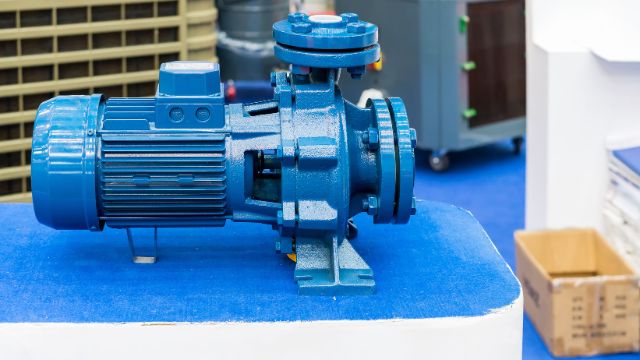See, the working mechanism of a centrifugal pump is incredibly simple and easy to understand. There is just a motor along with the impellers insides which rotate and pump the liquid from one place to another. That’s it. And this simplicity is the prime reason why such pumps are being used in so many industries out there. Many businesses or manufacturing facilities use centrifugal pumps to transfer different types of liquids from one place to another.
However, as with any other mechanical tool or system, there are certainly a few things that require your attention before you set up a centrifugal pump for your particular operations. And guess what? This is exactly where our today’s post comes into play because here we will be going over the most significant advantages and disadvantages of centrifugal pumps. So if you are here to get to know more about these pumps, then you are at the right place and at the right time. Let’s get down to it then. Shall we?

Advantages Of Centrifugal Pump
Since so many industries employ centrifugal pumps, let’s discover why exactly that is. There must be a lot of benefits to using such a pump in a business or manufacturing facility, don’t you think?
1. Simple and Effective
One of the best things about centrifugal pumps is how simple they are. With just a few moving parts, they’re built to last and do their job really well. Especially when you need to move a lot of fluid quickly, these pumps are just top-notch. They don’t complicate things; they just get the job done.
2. Saves Money in the Long Run
Nobody likes extra costs. The beauty of centrifugal pumps is that because they have fewer parts, there’s less that can break or wear out. And if you take good care of them, and we all know how important that is, these pumps can work efficiently for a very long time. So yeah, you end up saving money.
3. They’re Up for Many Tasks
No matter what kind of fluid you need to move, there’s probably a centrifugal pump that can do it. They’re like the multitaskers of the pump world. Whether it’s for your home, a farm, a big factory, or a town’s water supply, these pumps are always up to the challenge.
4. They Don’t Need Much Room
If you’re short on space, don’t worry. Centrifugal pumps have a neat design that doesn’t take up a lot of room. This means you can fit them in tight spaces without much trouble, making them super handy for all kinds of setups.
5. Quiet and Safe
As always, safety comes first, right? These pumps are gentle giants. They work smoothly, causing fewer shakes and noises. So, if you’re in a place where you can’t have a lot of noise or shaking, centrifugal pumps are simply the way to go.
6. Adjusts to Your Needs
This is where centrifugal pumps really show off. They’re adaptable. If you need to change how much fluid they’re moving, you can! Either by changing how fast the pump works or by adjusting a part called the impeller. This means you can tweak things to be just right for your needs.
Disadvantages Of Centrifugal Pump
Alright. Enough with the oh-so-good stuff about these pumps, let’s now take a look at what challenges or difficulties you might run into when using centrifugal pumps.
1. The Bubble Trouble
Have you ever seen bubbles form in boiling water? Cavitation in pumps is somewhat similar but can be bad news. It happens when there’s too little pressure and bubbles form in the liquid. When these bubbles collapse, they can hurt the pump parts, making them last less time and work less efficiently. It’s like getting a dent in your car from a small stone. So, always be on the lookout for this issue and do what you can to avoid it.
2. Thick Liquid Problems
Imagine trying to drink a really thick milkshake through a thin straw; it’s hard, right? That’s kind of how a centrifugal pump feels when it has to deal with very thick liquids. It doesn’t work as fast, and its performance drops, significant actually. So, if you’re dealing with something like thick syrup, this pump might not be your first choice.
3. Priming
Before you start a centrifugal pump, you have to fill it with liquid, kind of like pouring water into a water gun before you can squirt it. This step is called priming. If there’s air or gas mixed in with the liquid, the pump can have trouble. Think of it like trying to drink with a straw that has a hole in it, it just doesn’t work right. So, always make sure the pump is properly prepped.
4. Pressure Limits
Even though centrifugal pumps are versatile, they have their limits, especially when it comes to very high pressures. It’s like asking a regular car to race in a Formula 1 race, it might need some upgrades. If you need a pump for super high-pressure jobs, you might need a special kind called a multi-stage pump. But remember, fancier designs often come with a bigger price tag.
5. Outside Influences
Just like how we might struggle in extreme weather, centrifugal pumps can be affected by things around them. If the liquid they’re pumping changes or the conditions they’re in aren’t ideal, they might not work their best. So, always make sure they’re protected.
6. Normal Wear and Breakdown
Everything gets old and worn out, even pumps. Especially if the liquid being pumped is rough or has tiny hard bits in it, parts of the pump, like the impeller (which is like the heart of the pump), can get damaged. This means that sometimes, you’ll need to replace some parts to keep things running smoothly.
Conclusion
All in all, there is no doubt that centrifugal pumps are incredibly efficient and useful for pumping different types of liquids, but it would be straight-up foolish to ignore the issue with this type of pump. However, if you know how to deal with or mitigate these challenges, a centrifugal pump is definitely the best choice when it comes to pumping liquid.
Santosh Kumar, the author behind IndiasStuffs.com, is passionate about sharing valuable insights on a variety of topics, including lifestyle, technology, and Indian culture.
Page Contents

